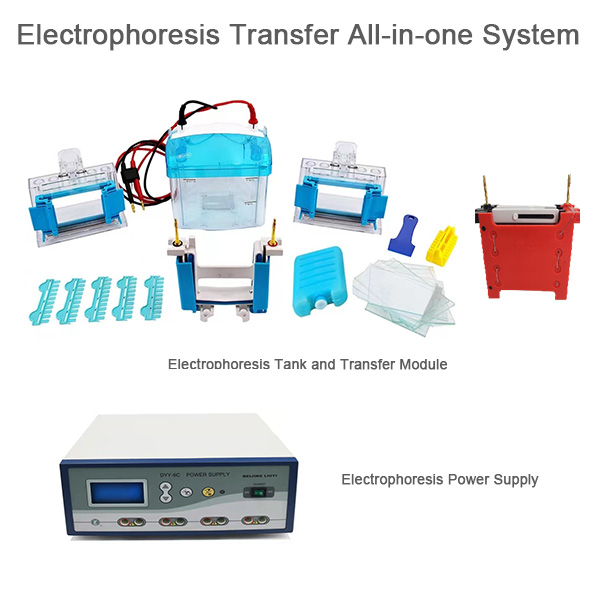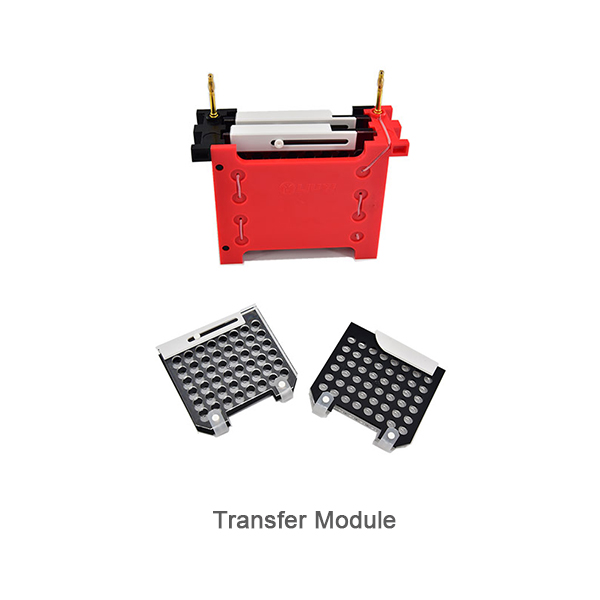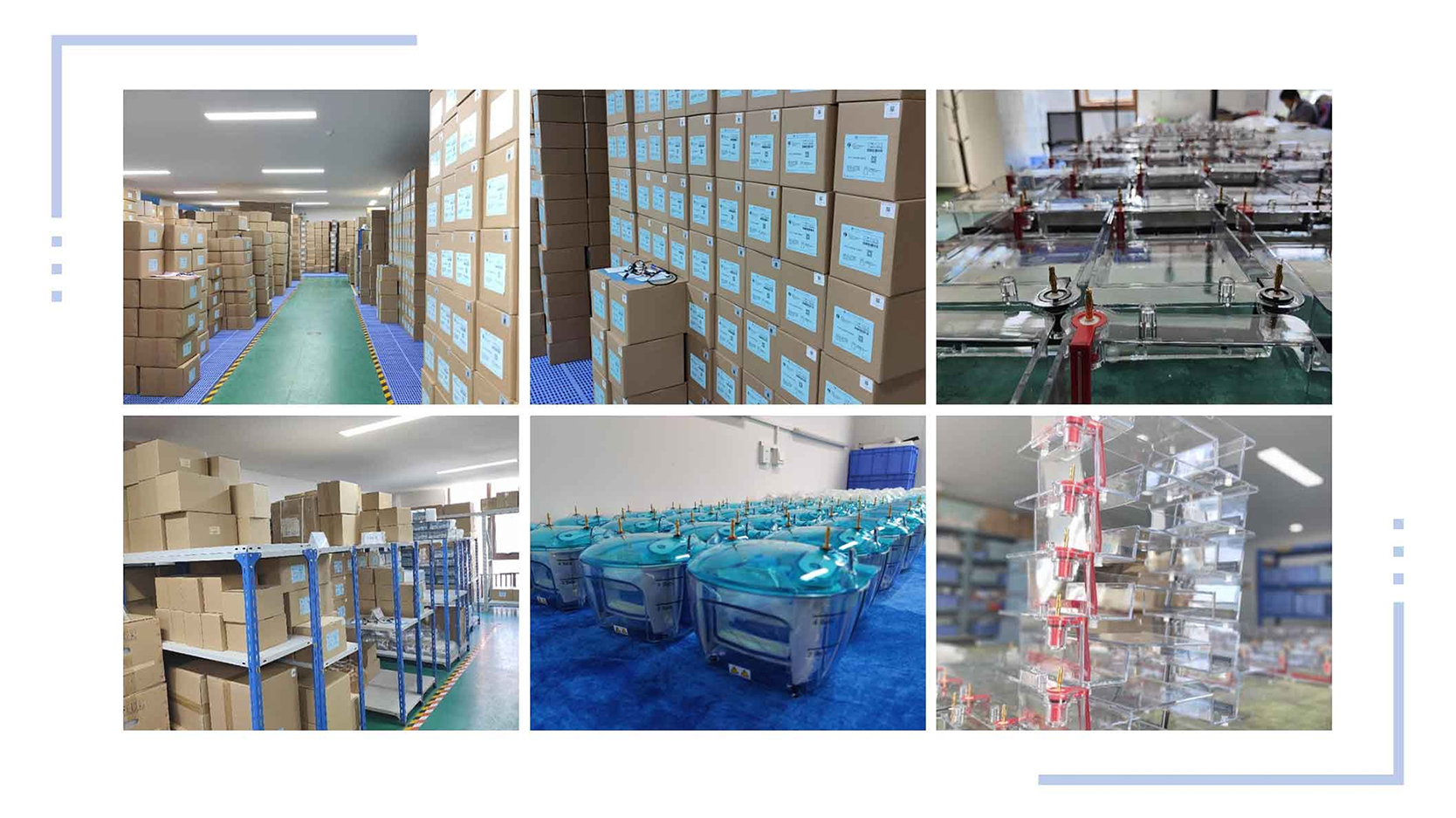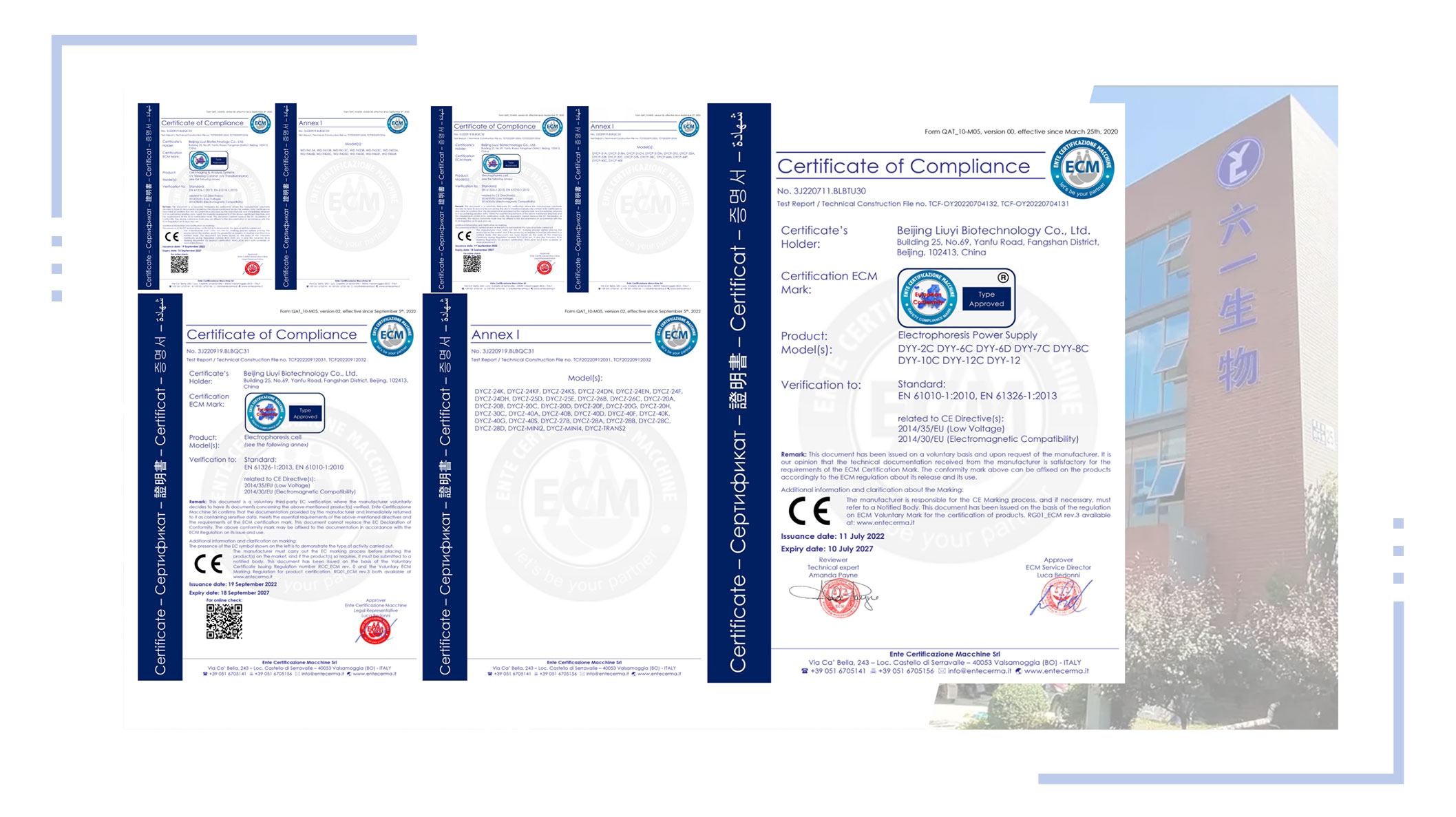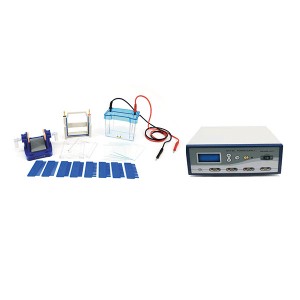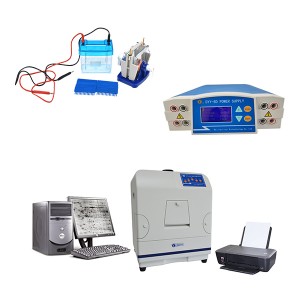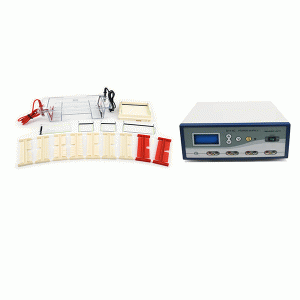Electrophoresis Transfer All-in-one System
Specification
|
The specification for Electrophoresis Tank |
|
|
Gel Size (LxW) |
83×73mm |
|
Comb |
10 wells (Standard) 15 wells (Optional) |
|
Comb Thickness |
1.0 mm (Standard) 0.75, 1.5 mm (Option) |
|
Short Glass Plate |
101×73mm |
|
Spacer Glass Plate |
101×82mm |
|
Buffer Volume |
300 ml |
|
The specification for Transfer Module |
|
|
Blotting Area (LxW) |
100×75mm |
|
Number of Gel Holders |
2 |
|
Electrode Distance |
4cm |
|
Buffer Volume |
1200ml |
|
The specification for Electrophoresis Power Supply |
|
|
Dimension (LxWxH) |
315 x 290 x 128mm |
|
Output Voltage |
6-600V |
|
Output Current |
4-400mA |
|
Output Power |
240W |
|
Output Terminal |
4 pairs in parallel |
Description
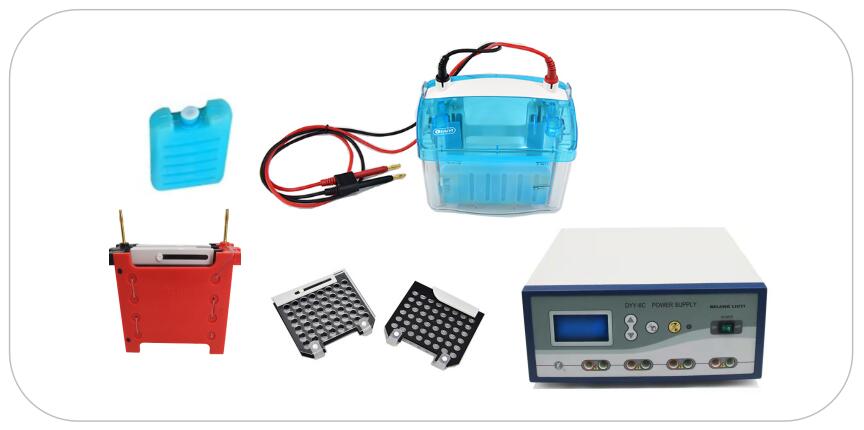
The electrophoresis transfer all-in-one system consists of an electrophoresis tank with a lid, a power supply with a control panel, and a transfer module with electrodes. The electrophoresis tank is use to cast and run the gels, and transfer module is used to hold the gel and membrane sandwich during the transfer process, and it has a cooling box to prevent overheating. The power supply provides the electrical current needed to run the gel and drive the transfer of the molecules from the gel to the membrane, and it has a user-friendly control panel for setting the electrophoresis and transfer conditions. The transfer module includes electrodes that are placed in the tank and come into contact with the gel and membrane, completing the electrical circuit needed for transfer.
The electrophoresis transfer all-in-one system is an important tool for researchers and technicians working with protein samples. Its compact design and ease of use make it a valuable addition to any laboratory involved in molecular biology or biochemistry research.
Application
The electrophoresis transfer all-in-one system is a valuable tool in the field of molecular biology, specifically in protein analysis. The transferred proteins are then detected using specific antibodies in a process called Western blotting. This technique allows researchers to identify specific proteins of interest and quantify their expression levels.
Featured
• The product fits for small size PAGE gel electrophoresis;
•The product’s parameters, accessories are fully compatible with main brand products in the market;
• Advanced structure and delicate design;
•Ensure the ideal experiment effect from gel casting to gel running;
• Rapidly transfer the small size gels;
•Two Gel holder cassettes can be placed in the tank;
•Can run up to 2 gels in one hour. It can work over night for low-intensity transfer;
•Gel holder cassettes with different colors ensure correct placing.
FAQ
Q: What is electrophoresis transfer all-in-one system used for?
A: The electrophoresis transfer all-in-one system is used for transferring proteins from a polyacrylamide gel onto a membrane for further analysis, such as Western blotting.
Q: What is the size of the gel that can be made and transferred using electrophoresis transfer all-in-one system?
A: electrophoresis transfer all-in-one system can cast and run gel size 83X73cm for hand casting, and 86X68cm pre-casting gel. The transfer area is 100X75cm.
Q: How does The electrophoresis transfer all-in-one system work?
A: The electrophoresis transfer all-in-one system uses electrophoresis to transfer proteins from the gel to the membrane. The proteins are first separated by size using polyacrylamide gel electrophoresis (PAGE) and then transferred to the membrane using an electric field.
Q: What type of membranes can be used with electrophoresis transfer all-in-one system?
A: Different types of membranes can be used with electrophoresis transfer all-in-one system including nitrocellulose and PVDF (polyvinylidene difluoride) membranes.
Q: Can the electrophoresis transfer all-in-one system be used for DNA analysis?
A: No, The electrophoresis transfer all-in-one system is designed specifically for protein analysis and cannot be used for DNA analysis.
Q: What are the advantages of using the electrophoresis transfer all-in-one system?
A: The electrophoresis transfer all-in-one system allows for the efficient transfer of proteins from a gel to a membrane, providing high sensitivity and specificity in protein detection. It is also a convenient all-in-one system that simplifies the Western blotting process.
Q: How should electrophoresis transfer all-in-one system be maintained?
A: The electrophoresis transfer all-in-one system be cleaned after each use and stored in a clean, dry place. The electrodes and other parts should be regularly checked for any damage or wear and tear.

